Go to any Las Crucen’s holiday festivities and you’ll find one of more of the following: tamales, champurrado and biscochos; and for those making these New Mexico staples, it’s a very personal process.
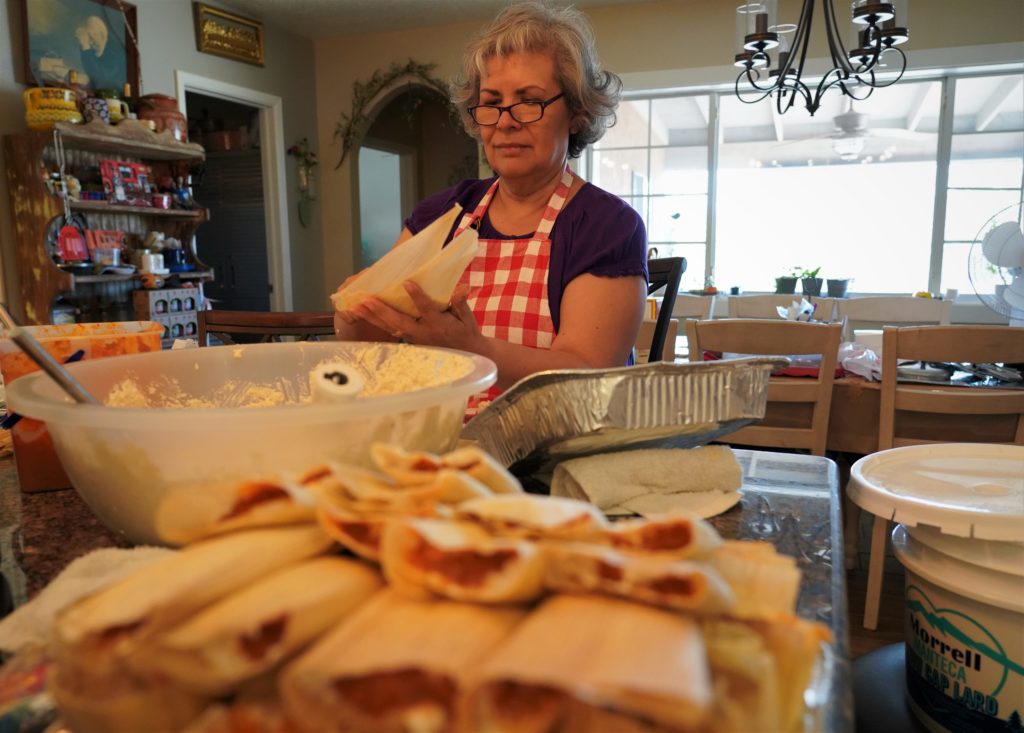 The tamale maker, Maria Elena Salinas.
The tamale maker, Maria Elena Salinas.
The tamale maker
Although you can typically find tamales year-round in the City of Crosses, it is most prevalent around the holidays. Like many others in Las Cruces, Maria Elena Salinas make tamales for Christmas, and this year is no different.
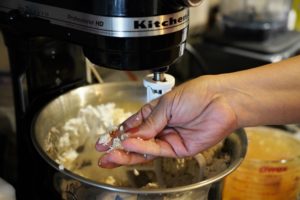 Salinas show feels the texture of the masa.
Salinas show feels the texture of the masa.
Base ingredients for red tamales: corn, lard, salt, pork, hojas (corn husks), chile and other ingredients specific to Salinas’ recipe.
Q: Why is it a tradition to make tamales around the holidays?
Maria Elena Salinas: I think for Hispanic families this was more economical, more practical for them. Basically, it was an everyday thing for them, like the corn, they would use them for tortillas and then they also use it to make atole (traditional hot corn- and masa-based beverage or dish), so it had a lot of uses. So when you have families that are low on money, especially in Mexico (it’s more economical).
Q: Who did you learn to make it from?
MES: My mom. I’ve been making them for over 40 years. My mom would cook her own maíz (corn) and then we would grind it in the Molino (grinder) by hand and would do it [all] from scratch.
Q: What memories do you have attached to the food?
MES: This is what my mom taught me… I inherited her sazón (special touch). I inherited her love for making food, and I don’t mean a little bit of food, I mean in abundance.
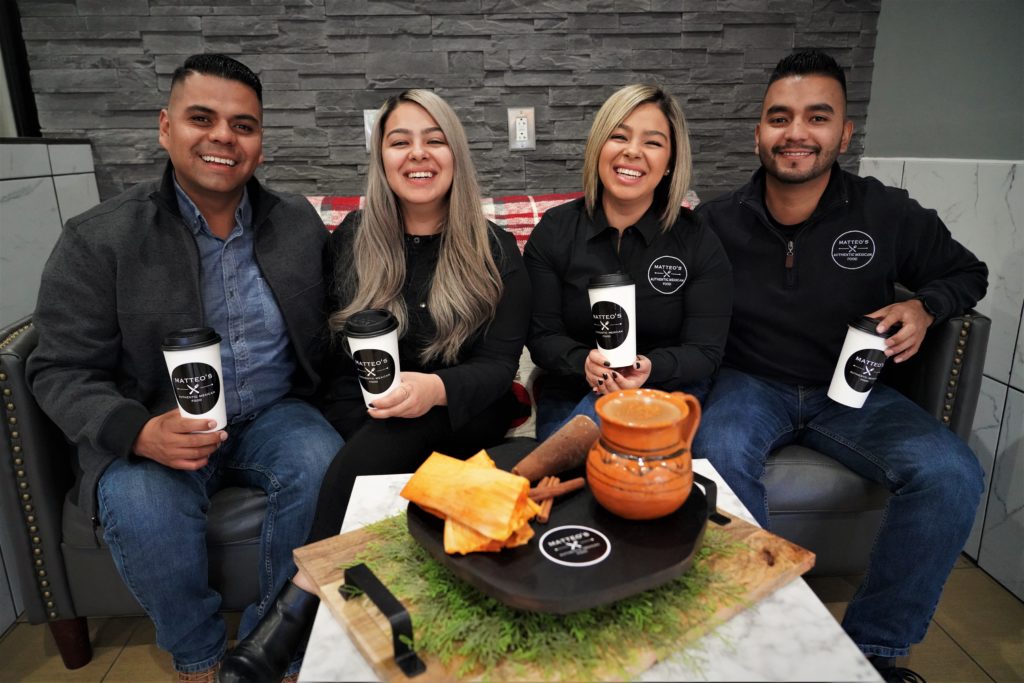 The crew at Matteos, pictured in the center, owners Michelle and Melody Rios, with their husbands.
The crew at Matteos, pictured in the center, owners Michelle and Melody Rios, with their husbands.
The champurrado makers
The evolution from food truck to brick and mortar has allowed Matteo’s Mexican Food owners and sisters Michelle and Melody Rios to expand their offerings. During their first holiday season in their new location the pair added a few seasonal menu items. Known for their unique agua frescas (fresh fruit drinks), Matteo’s is serving up a new drink, but this time to help warm the soul during the holidays.
Base ingredients: Masa (corn dough), piloncillo (unrefined whole cane sugar), cinnamon and “Matteo’s special touch”.
Q: Why is it a tradition to make champurrado around the holidays?
Michelle Rios: It’s your traditional Mexican hot drink. Here at Matteo’s we love share our Mexican culture with our agua frescas and our food, but especially for every season. We love to share a little bit about our personal culture. People love the Mexican culture and taste it through a champurrado in the winter.
Q: Who did you learn to make it from?
MR: We’re very family oriented. Right before launching (the champurrado) here at Matteo’s, we all, as a family, went to visit my grandmother in Mexico. I told her, ‘This is very very special because this is your recipe and we want to make sure we’re offering it exactly how we were raised making it.’ We had a very beautiful family gathering, all four generations, and we made it… and we made it for our customers, and they love it. We’re proud * to be able to share our family’s recipe.
Q: What memories do you have attached to the drink?
MR: Not only from our family, but from our consumers as well, every time they take their first sip it takes them back to their childhood memories with their families. A customer shared with us that she took her first sip and that her mother had passed, and when she enjoyed our champurrado that it reminded her of her mother.
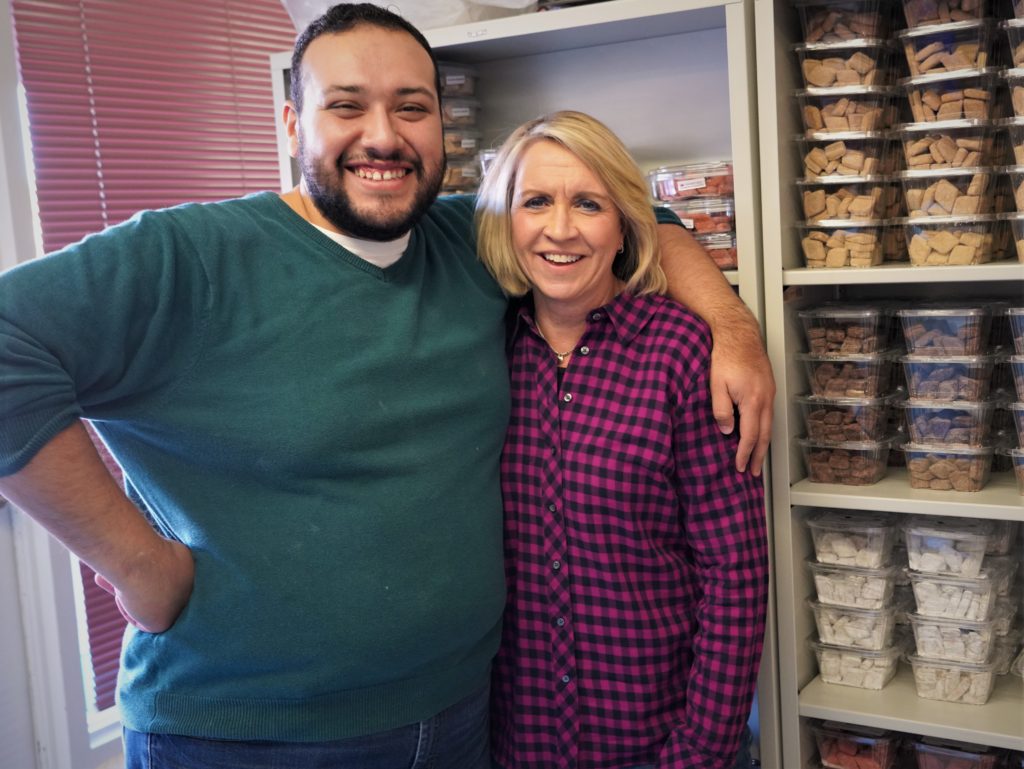 Jimmy Punzo and Barbara Mesa, Osito's Biscochitos owners. Punzo is also the baker.
Jimmy Punzo and Barbara Mesa, Osito's Biscochitos owners. Punzo is also the baker.
The biscocho makers
Referred to as biscochos in southern New Mexico, and biscochitos in the northern part of the state, it’s a delicious staple during the holidays and special occasions. When owners Jimmy Punzo and Barbara Mesa bought Osito’s Biscochitos from its original owners, they inherited an already established business and beloved local recipe.
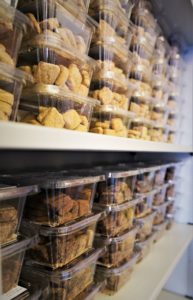 A wall of the different kinds of biscochitos offered at Osito's. Pictured are the traditional cinnamon and sugar, and Punzo's new flavor, chocolate.
A wall of the different kinds of biscochitos offered at Osito's. Pictured are the traditional cinnamon and sugar, and Punzo's new flavor, chocolate.
Base ingredients: lard and anise, and ingredients specific to the Osito recipe
Q: Why is it a tradition to make biscochos around the holidays?
Jimmy Punzo: I think it can fall into two categories. One, it’s a cookie. And what I mean by that is, around the holidays you go to parties and things like that. Cookies are definitely gonna be something that you see on the menu. I think what makes the biscochito different is that it is unique to our area.
Barbara Mesa: It’s a tradition…
JP: …that you’re really going to find strong here in the Southwest
Q: Who did you learn to make it from?
JP: I remember making biscochitos when I was a kid, about 8 or 9, with one of my aunts. This particular recipe, for our cookies here, we’ve been working with this recipe now for just over a year. There is a dramatic difference between the ones we make here and others that you’ll find somewhere else.
Q: What memories do you have attached to the food?
JP: My family, we would do a tamale party… and I remember one of the things that we would always do was also the biscochos. That was kind of like my aunt’s thing. So the biscochitos for us, that’s something we would always do—tamales and biscochitos.
BM: For me, I’m a transplant here. I came here for what was then junior high. So I became acquainted through my husband’s family— probably first introduced when I would go to Christmas at their house and weddings. Just seeing the look on his face when he eats them, because they are one of his favorite cookies. I really appreciate the cookies for the tradition that’s behind it and I enjoy them myself, but just seeing how other people enjoy them.
 The tamale maker, Maria Elena Salinas.
The tamale maker, Maria Elena Salinas. Salinas show feels the texture of the masa.
Salinas show feels the texture of the masa. The crew at Matteos, pictured in the center, owners Michelle and Melody Rios, with their husbands.
The crew at Matteos, pictured in the center, owners Michelle and Melody Rios, with their husbands. Jimmy Punzo and Barbara Mesa, Osito's Biscochitos owners. Punzo is also the baker.
Jimmy Punzo and Barbara Mesa, Osito's Biscochitos owners. Punzo is also the baker. A wall of the different kinds of biscochitos offered at Osito's. Pictured are the traditional cinnamon and sugar, and Punzo's new flavor, chocolate.
A wall of the different kinds of biscochitos offered at Osito's. Pictured are the traditional cinnamon and sugar, and Punzo's new flavor, chocolate.